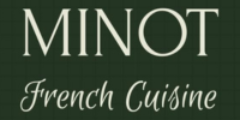The Rich History and Evolution of French Cuisine
The history of French cuisine is a tapestry woven with centuries of cultural evolution and culinary innovation. Its origins trace back to the Middle Ages, where feasts were elaborate, using a variety of ingredients sourced from hunting, fishing, and farming. Banquets during this period placed a heavy emphasis on presentation and symbolic gestures, setting the stage for France’s long-standing tradition of blending taste with aesthetics.
As France interacted with neighboring countries, both through alliances and conflicts, it absorbed diverse culinary influences. The Italians introduced refined cooking techniques and new ingredients such as pasta and tomatoes during the Renaissance. The Moorish influence, brought through Spain, introduced exotic spices like saffron and cinnamon. Germany introduced fermentation techniques, and England shared its roast meat traditions.
The French Revolution brought a dramatic shift in the culinary landscape. With the collapse of the monarchy, many royal chefs opened restaurants, making sophisticated cuisine accessible to the public. This period saw the birth of the modern restaurant and a democratization of French gastronomy.
Innovation continued as chefs like Auguste Escoffier revolutionized French cuisine in the late 19th and early 20th centuries. Known as the “king of chefs and chef of kings,” Escoffier streamlined cooking processes and introduced the brigade system in kitchens, significantly improving efficiency and consistency. His influence extended globally, cementing French cuisine as the pinnacle of culinary artistry.
One cannot overlook the distinction between various regional cuisines within France. Each region, from Provençal to Brittany and Alsace, brings unique ingredients and flavors to the table. The Provençal cuisine, with its focus on olive oil, herbs, and fresh vegetables, offers a Mediterranean flair. Brittany, known for its seafood and crêpes, highlights coastal resources. Alsace showcases German influences with its love for sausages and sauerkraut. These diverse regional specialties collectively contribute to the rich and varied landscape of French cuisine, making it a truly unparalleled gastronomic journey.
Signature Dishes and Ingredients of French Cuisine
French cuisine is globally renowned for its rich flavors and intricate preparations, showcasing an array of signature dishes that have become emblematic of the nation’s culinary heritage. Among the most celebrated is Coq au Vin, a hearty stew made by braising chicken with red wine, mushrooms, and onions. Originating from the Burgundy region, this dish epitomizes the French knack for transforming simple ingredients into sumptuous plates.
Similarly, Bouillabaisse, a traditional Provençal fish stew from Marseille, highlights the coastal influences in French cuisine. Consisting of various fish, shellfish, and a medley of aromatic herbs like thyme and fennel, it is commonly served with a side of rouille sauce. Ratatouille, another iconic dish, is a vegetable melange from Nice, traditionally prepared by layering eggplant, zucchini, and tomatoes with olive oil and herbes de Provence.
French culinary artistry extends to its creation of an array of crêpes and pastries. Crêpes, thin pancakes that can be sweet or savory, are a breakfast staple and are also enjoyed during festivals. For dessert, the buttery simplicity of a crisp Croissant or the cream-filled indulgence of an Éclair define the quintessential French patisserie experience. Tarte Tatin, a caramelized upside-down apple tart, further exemplifies the elegance in French dessert techniques.
Paramount to French cuisine is the use of fresh, high-quality ingredients, including a diverse selection of regional cheeses and wines. Butter, known for imparting a rich depth of flavor, is a cornerstone, alongside various herbs such as tarragon and thyme, which imbue dishes with unique aromatic qualities. Techniques like sautéing, poaching, and flambéing are integral, emphasizing the precision and care inherent in French cooking.
The cultural significance of these dishes can’t be overstated. They are not only culinary delights but also markers of French identity, deeply woven into daily life and celebratory occasions. Whether enjoyed during a family gathering or a festive event, these signature dishes remain a testament to the enduring legacy of French culinary tradition.
